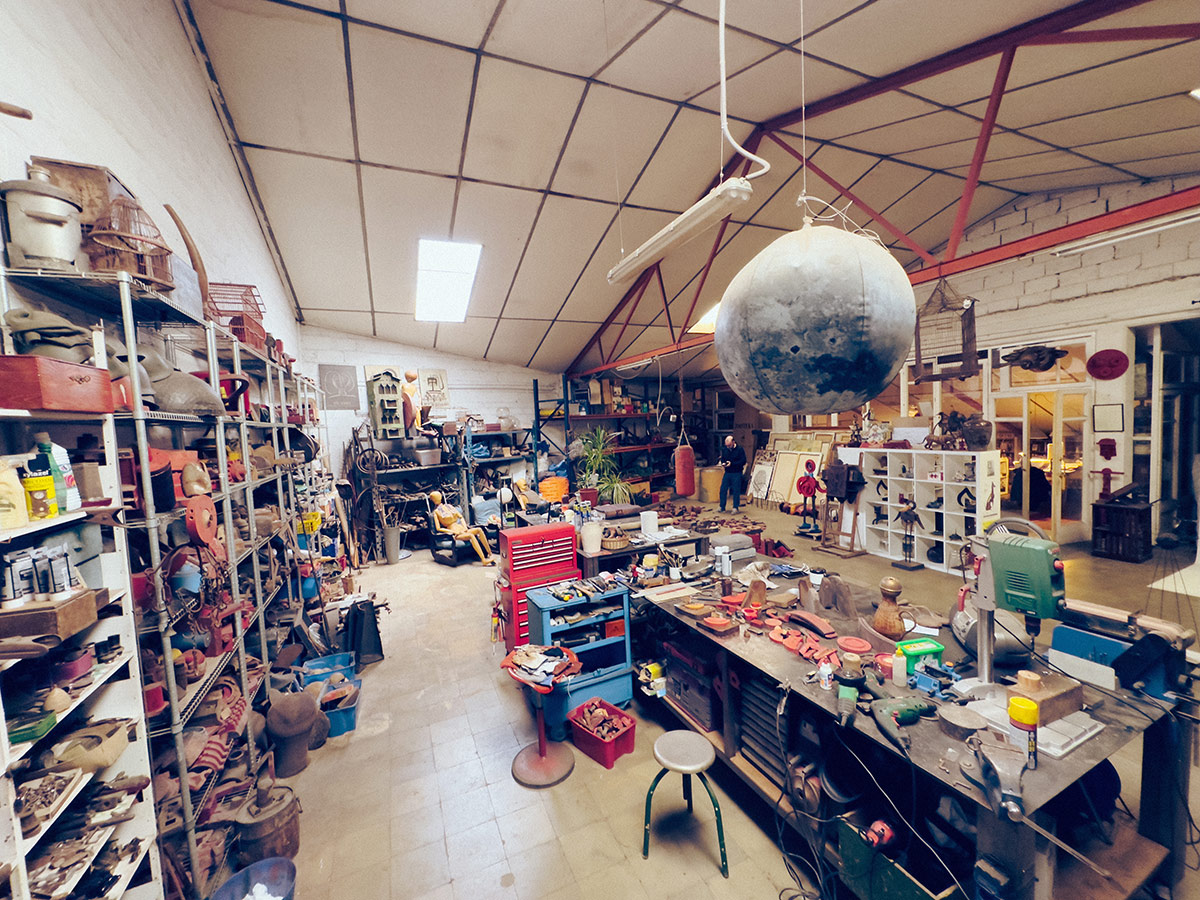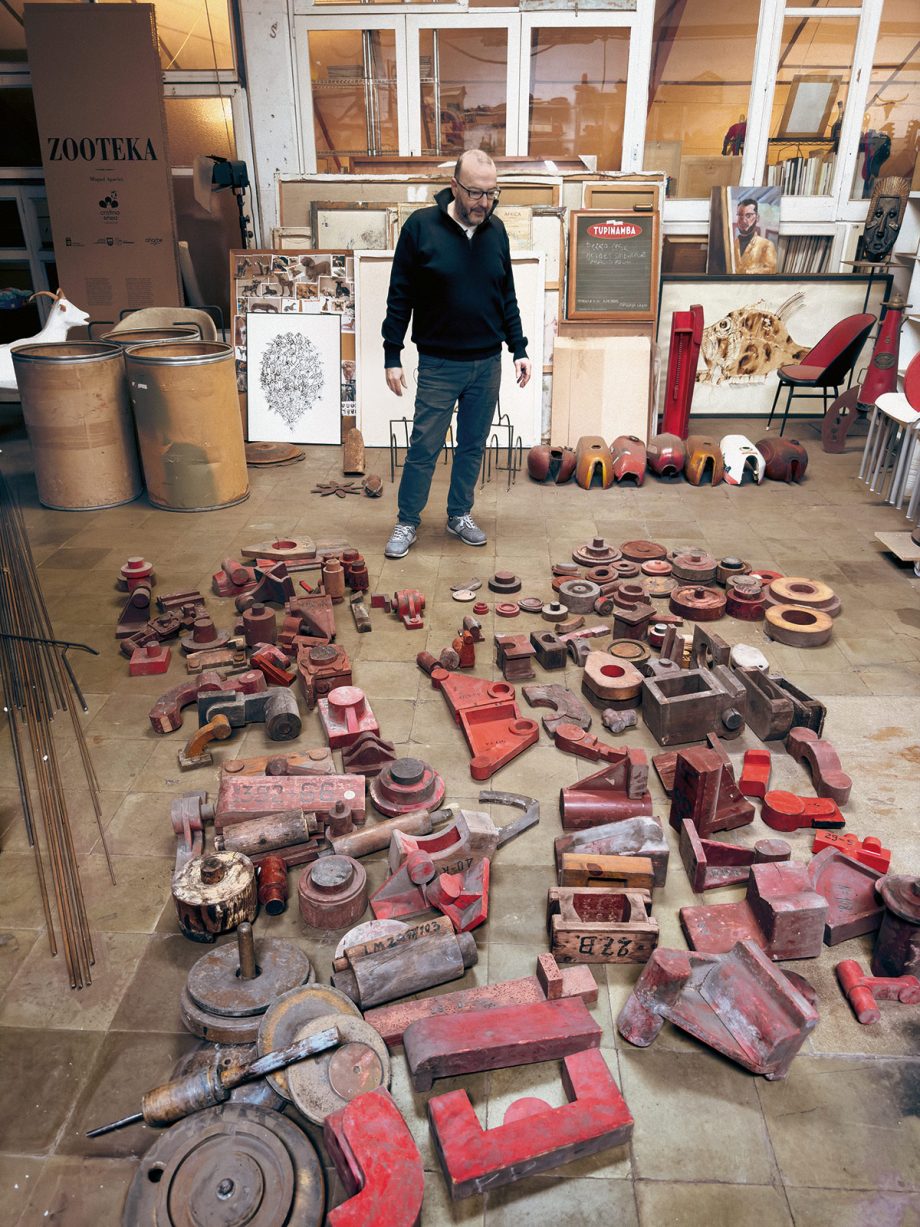THE ALCHEMIST OF NOAH’S ARK
WORDS AND INTERVIEW BY CARLOS ÁLVAREZ PHOTOGRAPHY BY MANUEL NAVARRO BARCELONA SPAIN STARRING MIQUEL APARICI @MIQUELAPARICI WWW.MIQUELAPARICI.COM
One of the things I am most passionate about when I travel around the world is getting lost in the flea markets that appear in cities and towns, magical places where you can find relics or strange objects that transport you to distant cultures and remote times. Some of these end up at home because of their beauty as purely decorative objects. In the case of Miquel Aparici, it’s a whole different level. Entering his studio is like entering a large bazaar where he keeps thousands of pieces, some of which are incredibly beautiful and rare.
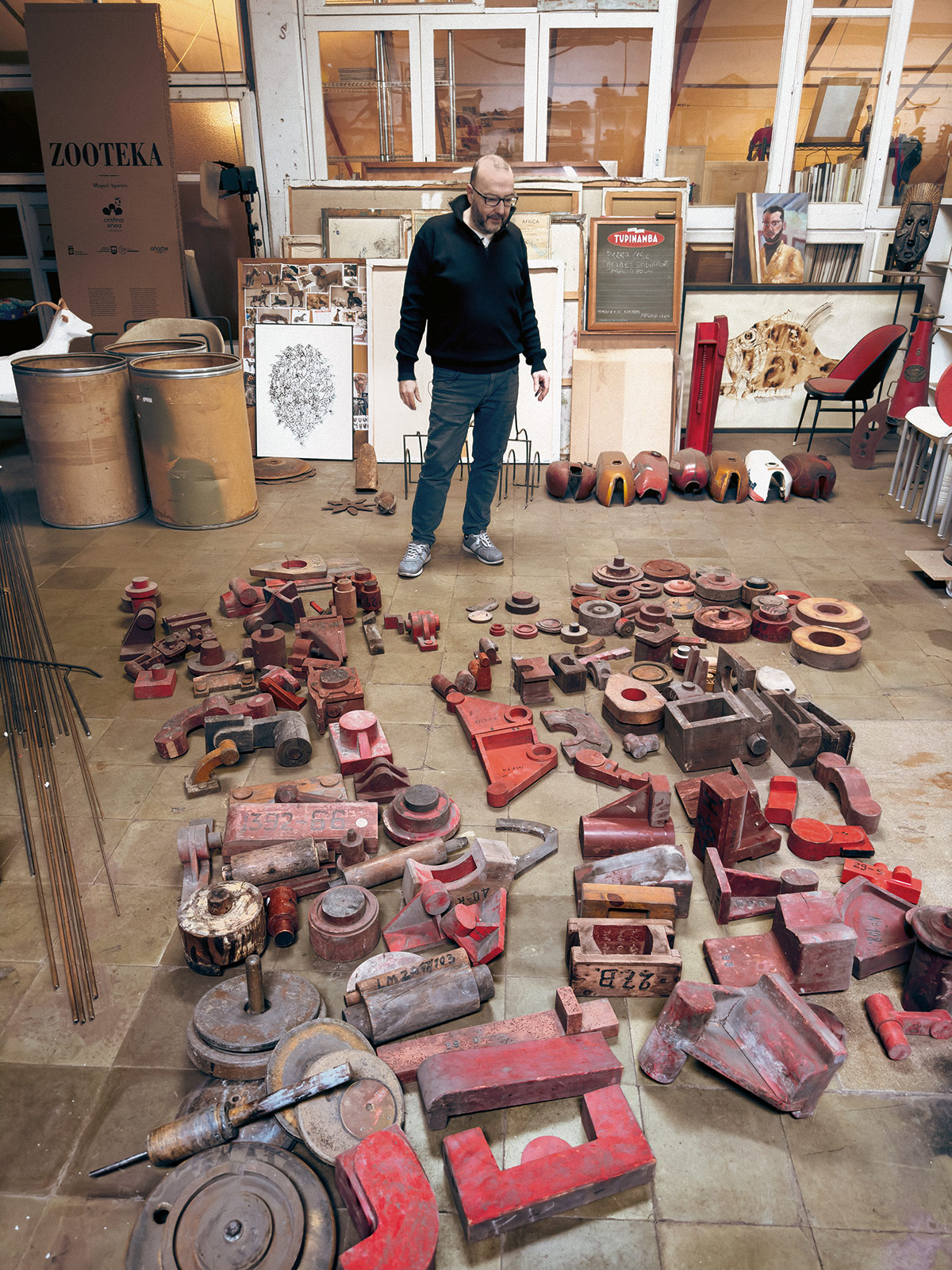
Sometimes it is difficult to guess their origin, but like a great alchemist, he is a master at assembling and giving life to his sculptures. The first time I came across a sculpture by Miquel Aparici it was love at first sight. A beautiful greyhound made from old pieces, such as a boxing boot or the legs of a small table, welcomed the public to his studio on an open day, when different studios in the same industrial building where he has his creative space were open to the public so that they could discover his work.
His studio is captivating. Dogs, fish, dragonflies, toucans, gorillas and leopards are either spread across shelves, fish tanks, cages or filling the central space, making you want to stroke and play with them. That is what Miquel Aparici achieves with his pieces, an attraction for the spectator that goes beyond the observation of his sculptures. He evokes an imaginary childhood somewhere between the World of Oz and Noah’s Ark. As a child, I dreamed of learning to tame animals in a circus and going off to the jungle to be like Tarzan.
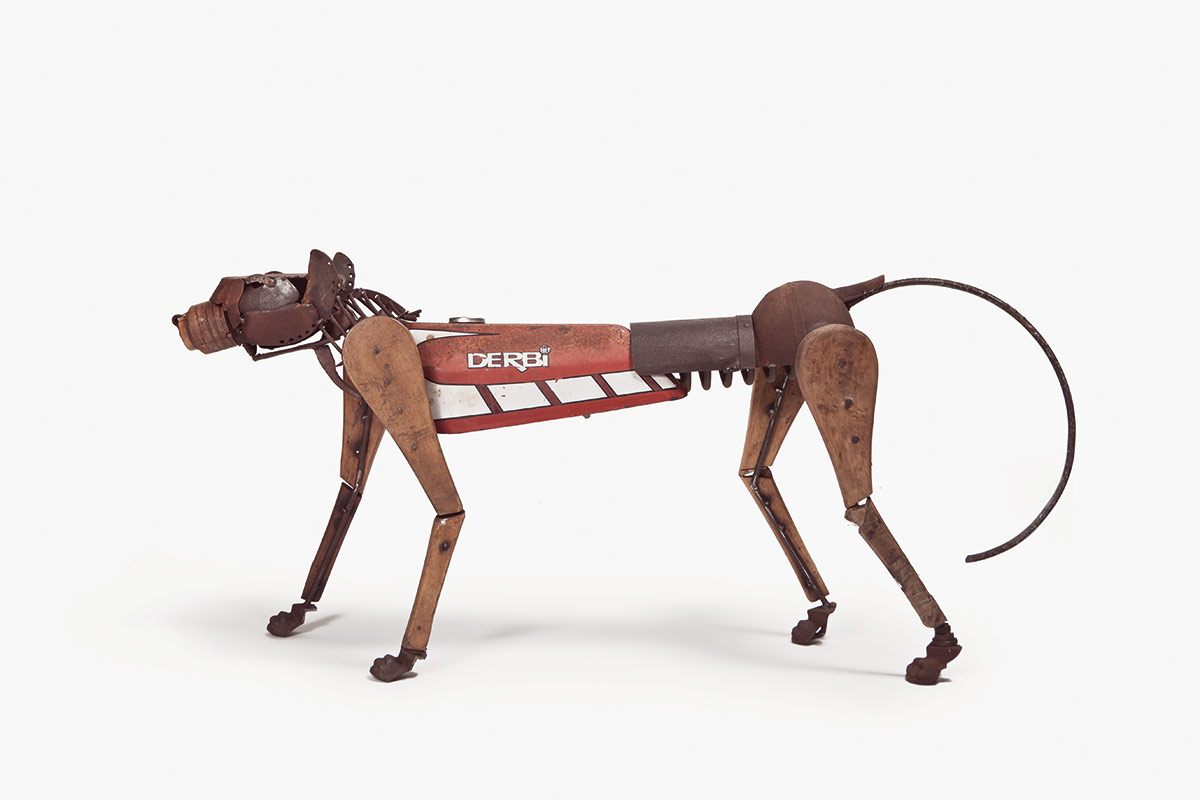
On your shelves, I see hundreds of objects that take you back to moments of a past childhood. Tell me what they mean to you.
I really like to treasure objects that have meant something to me. I have a large bookshelf where I keep mementoes and toys from my childhood, things that always leave a mark on you, like Superman, Spiderman, old envelopes of tin soldiers, Madelman, Tintin figures, a comic book character I love, Bert and Ernie from Sesame Street. I also treasure drawings by great friends of mine and from my time at the magazine “El Jueves”, such as Miquel Gallardo, Arnal, Perich and José Luís Martín. They are objects or drawings that have their own story in my life, as well as unique and strange photos. There is one where we are naked looking at some works of art in the room of a great museum in the city, which I won’t reveal! A friend of mine let us in on a day when there were no visitors.
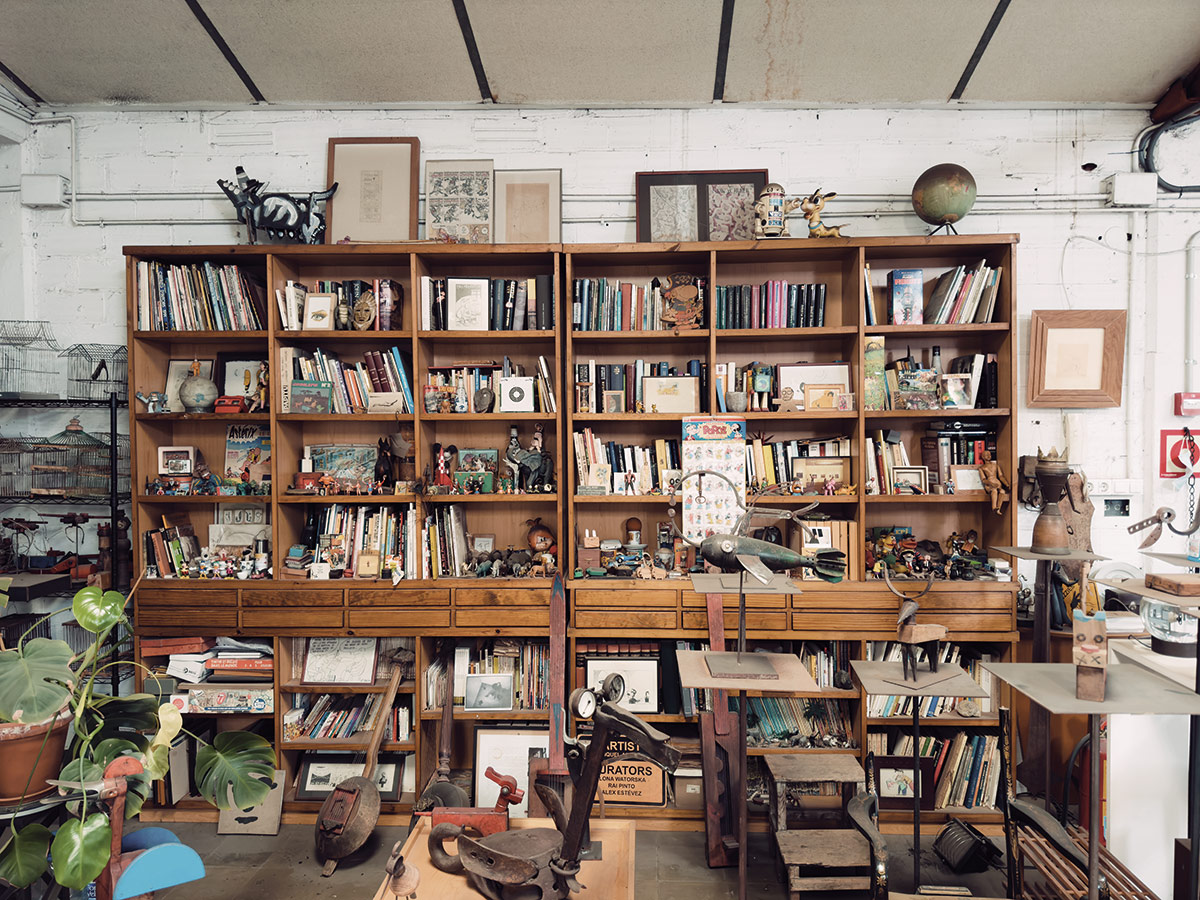
What a great moment to portray yourselves naked in front of the art, very provocative!
Yes, but it was very spontaneous, the idea of keeping an artistic memory of that privileged moment.
You have thousands of pieces that I imagine you have collected over the years.
It is many years of work, but apart from the things I have collected from different places, I’m lucky that many of my friends give me pieces, which for me is like discovering Tutankhamun’s treasure. I have industrial wooden moulds that embody everything I am fascinated by: their history, antiquity, the fact that they were used in the past, their letters or numbers, and the different shapes. I love them. In an old filing cabinet, I keep rivets, nails and fasteners for constructing old boots, which were given to me by the owner of an old leather goods factory. Amazing little treasures.
On these shelves here you have everything very well organised and there are real relics, aren’t there?
Of course, all of this is my colour palette. What for a painter would be their colour palette, for me, it’s this is my working palette. People say, “Wow, it’s so tidy!”, but I need to be able to find things, otherwise I would spend ages looking for a particular item rather than working.
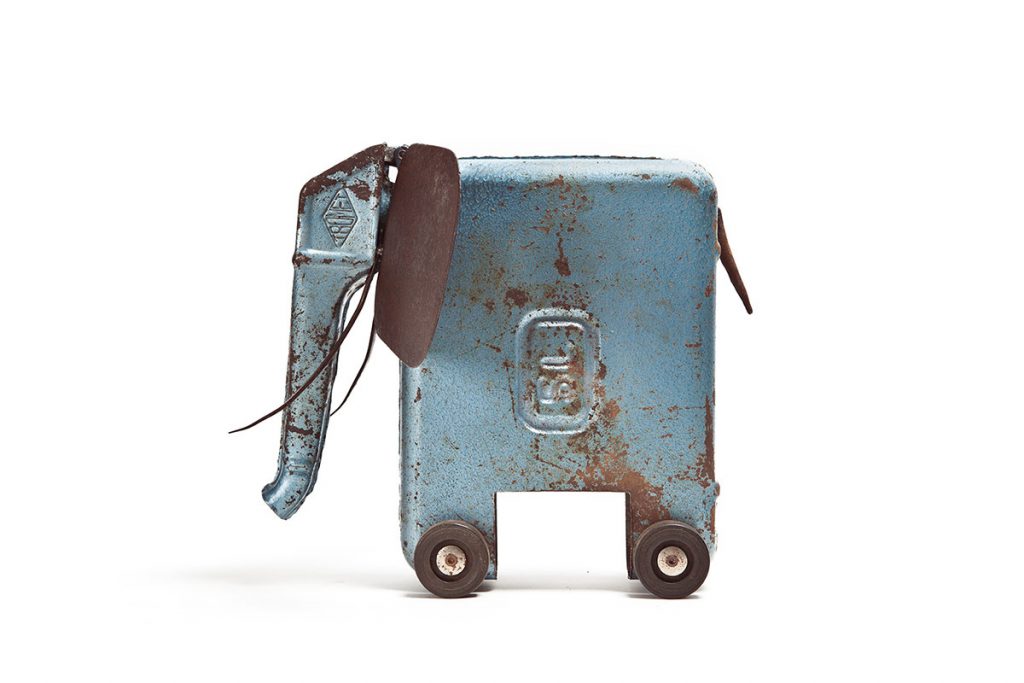
And what can we find here?
There are shoes that I use to make faces or body parts of different animals. Almost all of them are from the last century, from the 20s or 30s. These are boxer’s boots, from the early years of boxing, let’s say. There’s a piece from a bullfighter, it’s made of hard leather so that the bull can’t pierce it. But it was probably damaged by the horn and they only sold one and who would be interested in buying just ne? Well, me! I also have African chairs and pieces used by the Tuareg, who travel across the desert, to support their heads at night, to avoid a scorpion or a bug getting in their ear. I love this kind of object.
They have been used since Egyptian times. And they are pieces that, as well as having had a use, are beautiful in shape and design. In fact, that’s what I like most about the pieces I use: that they have their own story, that they speak of their past, of what they have lived through. They are tools and objects in disuse that are often thrown away. I love to recover them, because in addition to their beauty, they have a historical value, a past that has left its mark on them and that I sense.
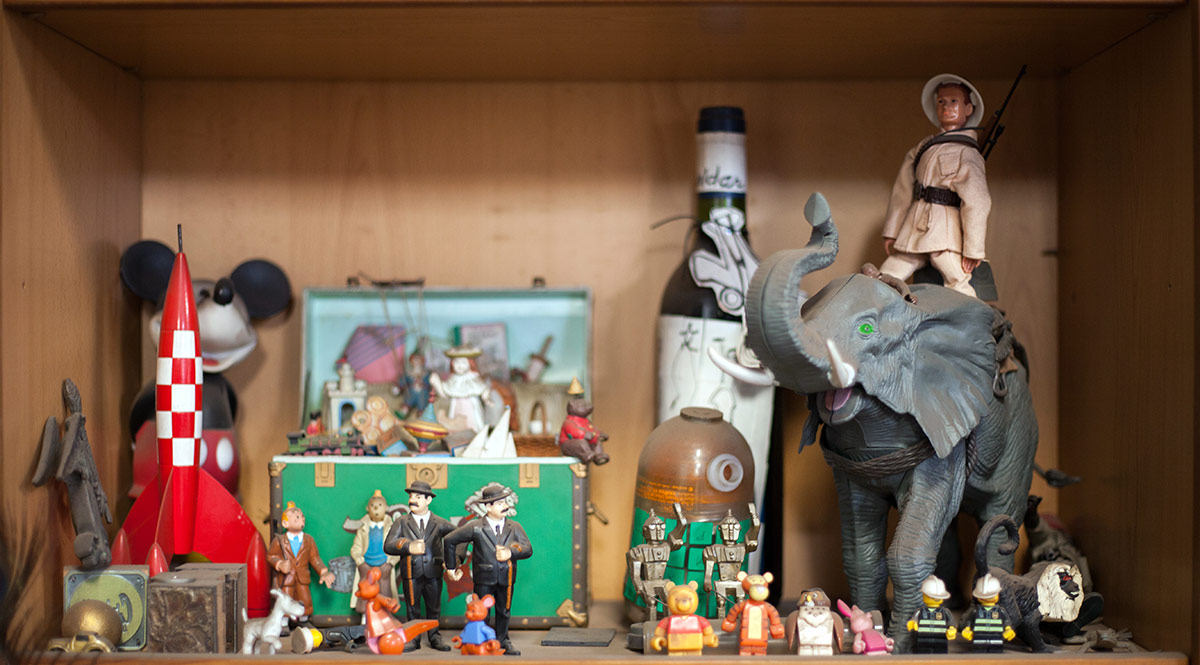
Do you have a piece that you are very attached to and don’t want to use?
There are some that I don’t use because I really like them or because they evoke a memory of mine. Like an anvil mould, for example, it’s beautiful! Making a wooden anvil is like visual poetry, don’t you think? Or these envelopes from my childhood that are still unopened, there are little soldiers inside and when I was a kid I was crazy about them.
ll this leads you to be a regular visitor of flea markets, antique shops and dealers.
es, the main purpose is the search for material for my sculptures, but whenever I find antique toys, which I love, or animal figures, I take them for my work. I have a figure of an old African monkey’s face, where the eyes are a pair of shells. I think it’s beautiful because of its simplicity.
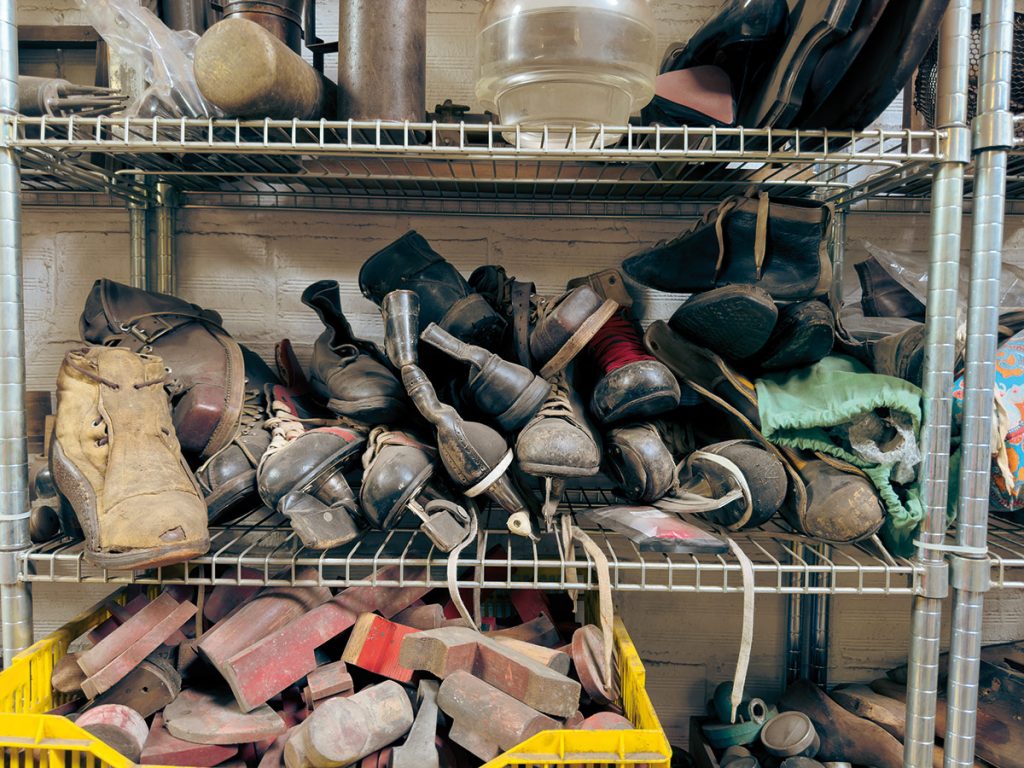
Do you travel a lot in search of material?
I travel, but I’m not a great traveller. A couple of months ago I was in Morocco and I was fascinated, it’s a country that takes you to another time entirely, another world. Aesthetically it’s amazing, I loved Marrakech and I came back fascinated. I also look for pieces on the internet. If I need specific pieces for the rhinoceros, like old tractor chairs, I look in Japan, France, England, and in the end you find them. The problem is to find a balance in terms of price. I need material for my work, but I’m not a collector who is willing to pay any price.
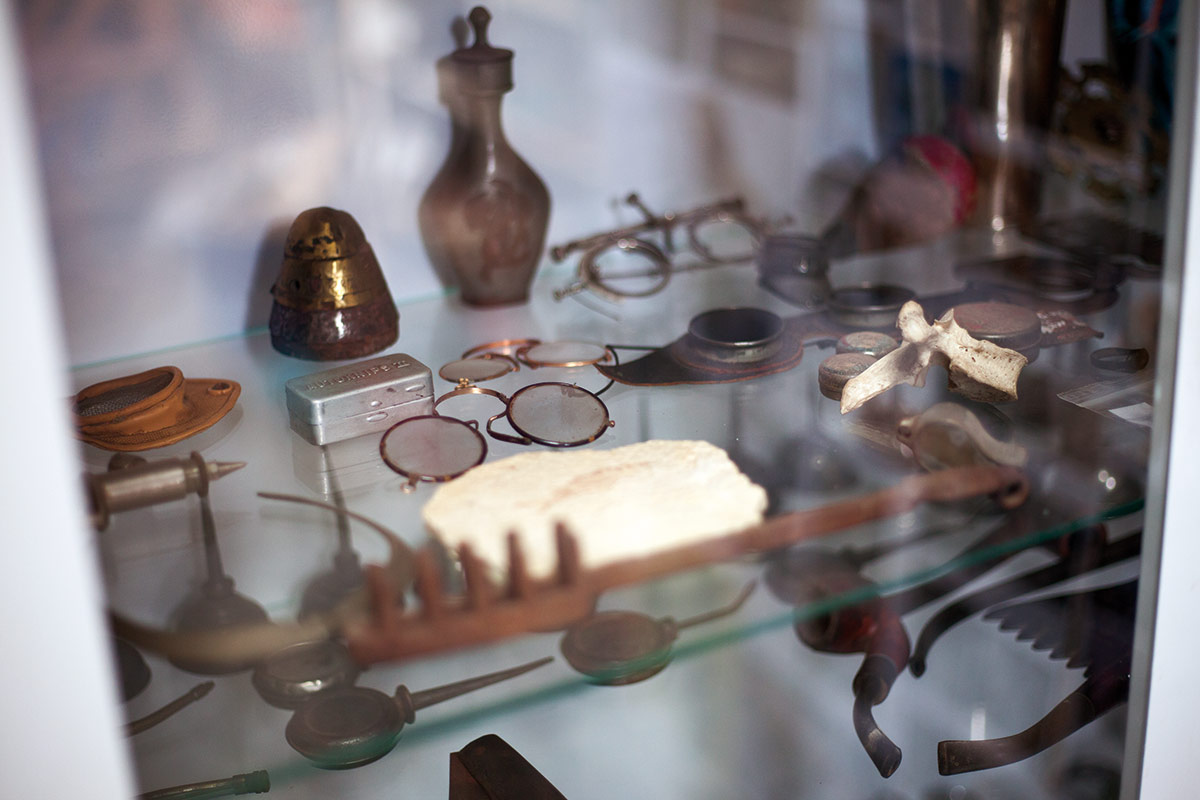
Your sculptural work is marked by the animal world, but there are also pieces that go beyond your usual line.
Yes, I have a series of musical instruments that I made from old skis, hat moulds… I love this cello. I made it with an ebony leg and industrial moulds. It doesn’t really make a sound, but I was interested in the aesthetics, I think instruments are very beautiful objects. This probably stems from my early twenties when I spent a summer in the south of France, it was a music and drawing course. We students drew while the musicians played, it was an incredible working environment, the perfect union, the music, the drawing, the moment. I have very fond memories of it.
Tell us about dogs. Could we say that they are the most representative figure in your work?
Maybe yes, you know what it is? Dogs are very diverse, there are all kinds of breeds, from chihuahuas to mastiffs. And you can make them life-size. With a rhinoceros, you either make it big or you can’t do much. But dogs are a size that is easier to reproduce. Also, people recognise them. I like that there is communication with people, that they are somehow “alive” and, above all, that you smile when you see one of my dogs. And they are animals that I like very much. I make them almost spontaneously. I have also made elephants, which I love, life-size and tiny. I think this hand-held petrol tank, which cars used to have in the old days, is an amazing piece. I just added some ears and tusks and there you have it. Sometimes it’s as simple as that. You have to have the vision to make this magic happen.
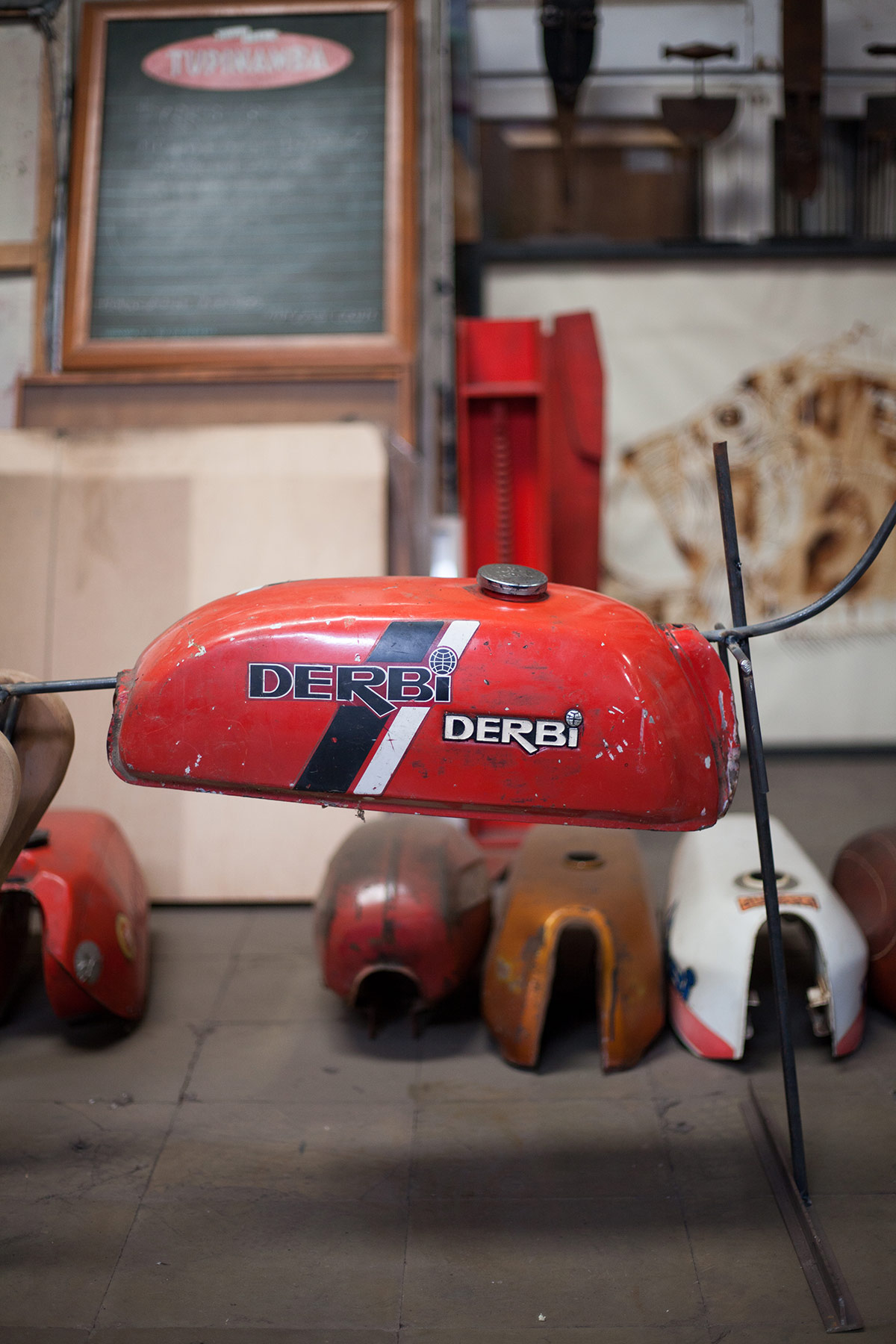
Tell us about your current projects.
Right now I’m making big pieces and small pieces at the same time. I’m going to start a lion that I want to make with materials related to Moroccan history and culture that I’m collecting, like trays and teapots that I’m going to use to cover it. I’m also making a collection of little birds out of small pieces. At the moment I’m working on the different shapes of beak, eyes, wings… I would like to make a collection, like a flock of birds. As you can see, I’m combining different works. Small pieces and big pieces, and also dogs. Dogs always come up because it’s one of the animals I like to make the most.
When did you start out in the art world?
I started drawing with coffee. I did my first drawing in 2000, when I was 35 years old, a bit late perhaps, but the truth is that it worked for me immediately. Two months after I began, I had my first exhibition in Barcelona, and nine months later, one in New York. Later on, I started to combine drawing with sculpture, which also started to work, and in the end, I stuck with sculpture. I’ve always had a good response, right from the start. And 23 years later, the recycling/ecological theme has even more value, something that was almost unheard of when I began.
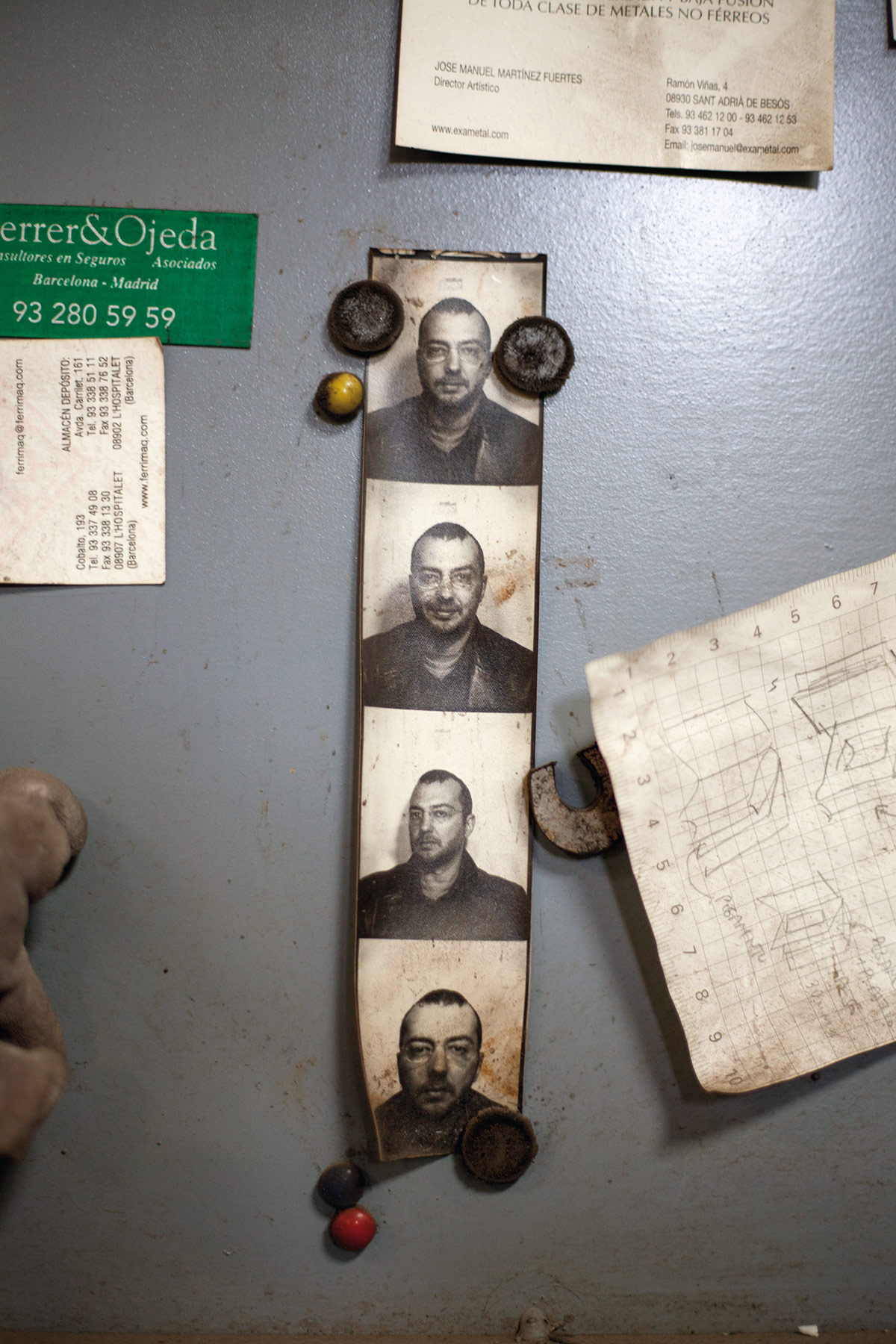
What was your first sculpture made with recycled elements?
They were insects. In fact, I have the second sculpture I made in my studio. At the beginning I didn’t use so many old objects. My sculptures were the result of wanting to draw in the air. My intention at that time was to draw, I drew with coffee and I used the spoon as a tool or a brush and it was all very monochromatic and linear. Then suddenly, I felt like moving on to the third dimension, so I started to draw in the third dimension with wire, and as I was drawing insects, I started to make insects. Then I moved on to using wood and joining wire to wood. I needed to use metal, and then I learned how to weld in order to build bigger sculptures. That’s when I got hooked on three dimensions. You enter a field of research and search for the techniques of each material, which are very different, and it presents you with new challenges. That allows you to evolve. Every time I find different problems, I love to look for people to help me or to suggest how I can solve them so that the piece holds up, so that it works, so that it looks good aesthetically. You have to concentrate on the piece and think more, and I like that. Even though I have the experience I have, I know that I can always keep progressing and learning through my work.
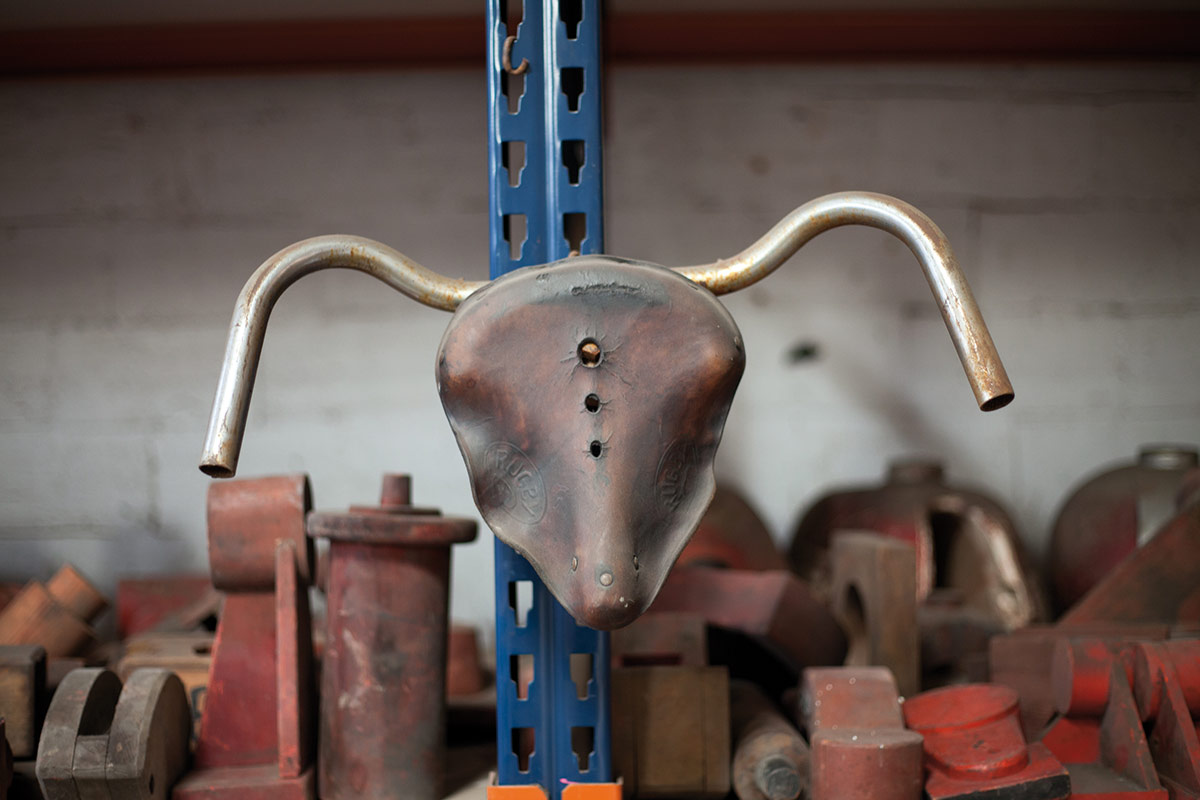
How do you read your pieces?
For me, they are very emotional pieces, and I think it’s easy to understand what they represent. You don’t have to decode anything. On the one hand, there’s the animal, with its gesture, its gaze, its size, and on the other hand there are the materials, which you discover the moment you approach them: a petrol tank, an old football boot, objects that are recognisable in everyone’s imagination, even if there are some that you don’t quite know what their function might have been. But, in the end, it is something that has to work by itself. It has an artistic value and people must be willing to pay money for them. That’s the test they have to pass, that someone wants them in their home. I always say that my pieces are my ambassadors and that they live much better than I do, as some of them are in houses and spaces that are incredible.
You studied at art and design school, didn’t you?
Yes, at the Escola Massana, I studied graphic design. It was an amazing place, it was like going to the “Fame” school, the people who studied there were very interesting. I met illustrators like Lluïsot, and through him I started working at the magazine “El jueves”. In fact, I started working very young, because I set up a design studio with a colleague from La Massana, and before that, with Lluïsot, we had a studio in Carrer Robadors, where we used to go to paint in the afternoons. I could say that it’s thanks to my time at l’Escola Massana that I am where I am today, but I have always had a great sensitivity towards art and all artistic manifestations: drawing, sculpture, painting, music…
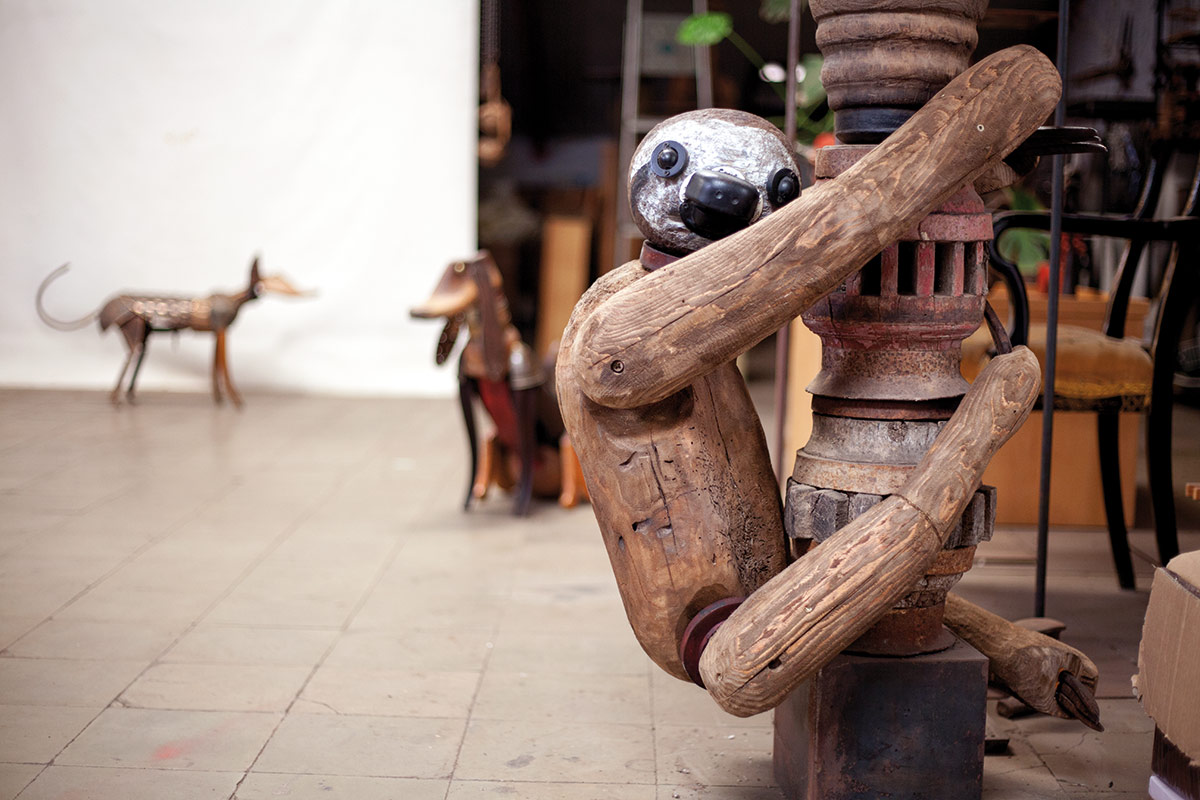
You have worked as an art director for National Geographic magazine. Tell us about your experience.
I spent two years working for them. It was like the culmination of my work. First I worked for 18 years for the magazine “El jueves”, 100% humour, and after years of making animal sculptures, National Geographic approached me. That’s when my whole universe of sculptures merged with my other work in the editorial field, humour and wildlife. I stopped a few months ago, because I felt I was at a stage where I needed to dedicate my life completely to sculpture.
And what is that like?
I had already been working for the gallery “Villa del Arte Galleries” for some time, and in September 2022, I decided to dedicate myself 100%. It was something I had always thought about and it was just the right time. Bert, who is one of the owners, is an art enthusiast. He has a great capacity for work and a very broad vision, which always goes beyond what you can imagine. He also takes great care of me, he’s a lovely person, as is his whole team. Now, they have partnered with the “Hotel Mandarin Oriental” in Barcelona, on Paseo de Gracia, a very beneficial synergy that will give more visibility to their work and to the artists.
